#MERCAT MEDIEVAL
Text
Hear the rendition of a soundtrack of Pokémon done with drums and a Catalan traditional instrument called 'Gralla' (named after a bird that sounds similar to it).
1 note
·
View note
Video
FIRA DE L'AIXADA-ART-PINTURA-MANRESA-PARADES-MERCAT MEDIEVAL-PERSONATGES-MERCATS-CATALUNYA-PINTOR-ERNEST DESCALS por Ernest Descals
Por Flickr:
FIRA DE L'AIXADA-ART-PINTURA-MANRESA-PARADES-MERCAT MEDIEVAL-PERSONATGES-MERCATS-CATALUNYA-PINTOR-ERNEST DESCALS- Personajes en el MERCAT MEDIEVAL de la FIRA DE L'AIXADA de MANRESA, las calles del Barri Antic de la ciudad se llenan de paradas y pequeñas tiendas en los que exponer y vender artículos relacionados con las costumbres de la Edad Media, en esta escena el vendedor nos muestra su atuendo con tintes medievales. Pintura del artista pintor Ernest Descals sobre papel de 50 x 70 centímetros, pintando el aroma histórico y a sus protagonistas.
#PERSONATGES#MERCAT MEDIEVAL#FIRA DE L'AIXADA#MANRESA#BARCELONA#CATALUNYA#CATALONIA#CATALUÑA#MEDIEVALES#MERCADO MEDIEVAL#PERSONAJES#ESCENAS#PARADES#TIENDAS#BOTIGUES#ATAUENDOS#MERCADOS MEDIEVALES#HISTORIA#HISTORY#RECREACION HISTORICA#BARRI ANTIC#VESTIMENTAS#ART#ARTE#ARTWORK#CHARACTERS#PLASTICA#FINE ART#PINTAR#PINTANDO
0 notes
Text

The Battle of Man Garvia was fought on July 31st 1187 in Northern Scotland.
This was part of the Meic Uilleim Risings, a series of uprisings against the dominant rulers of the time, who are known in our history as The House of Dunkeld, I will delve a wee bit further and take us past the events that happened on this day in 1187.
As a nation the Scots were still finding our feet in the Medieval era, the The House of Dunkeld, in Scottish Gaelic Dùn Chailleann, were the dominant rulers, from 1034 to 1040 and from 1058 to 1286. The line is also variously referred to by historians as "The Canmores" and "MacMalcolm". However they were often fighting to hold on to their power.
On of the main rebellions against their reign was from The MacWilliams, or Meic Uilleims’, to give them their proper gaelic name. Their claim was rooted in the succession crisis precipitated by Malcolm III’s death in 1093. Although Malcolm’s eventual successors were three of his sons by his second wife, St Margaret – Kings Edgar, Alexander I (and David I – the throne had in the interim been occupied briefly by Duncan II (r.1094), Malcolm’s son by his first wife, Ingibiorg.
It was through an offspring of Duncan II that the claimants sprung up, Duncans son himself, William, seemed to have been content to leave the kingship to his half-uncles, his descendants – styling themselves the ‘Meic Uilleims’ – were not so passive.
These later Meic Uilleims were able to press their claims because William himself had, prior to the death in the 1150s, built up a power-base in northern Scotland, possibly taking possession of the important earldom of Moray. When King William I began tightening royal control over this region in the 1160s and 1170s, the Meic Uilleims were able to present themselves as both champions of Gaelic Scotland and guarantors of Moravian autonomy, and in this capacity they seem to have attracted considerable support from those who stood to lose out in the face of the king’s expanding power.
Meic Uilleim-led resistance may already have been gathering pace by the later 1170s, but it was in 1181 that Donald Meic Uilleim, taking advantage of the king’s temporary absence in France, launched a full-scale rising. He seems to have taken almost complete control of both Moray and Ross, and by 1186 government control in the north was so tenuous that the Meic Uilleims were able to launch a raid as far south as Coupar Angus. It took a huge royal effort, culminating in a battle at the unidentified site of ‘Mam Garvia’ in 1187, during which Donald himself was killed, to put down the rebellion.
We hadn't heard the last of the Meic Uilleims , however. Donald’s sons, who had fled into exile following their father’s defeat, returned to Scotland in 1211 to renew the challenge. Several royal campaigns succeeded in capturing one son, Guthred, who was quickly executed, but the other, Donald Bàn, remained at large, and led a renewed push against the young Alexander II. again raising much of Ross and Moray. This time, it was the action of a rival regional magnate, Fercher mac an t-Sagairt, that undid the Meic Uilleims, and following his defeat of them, Fercher sent the heads of Donald Bàn and some of his main supporters southwards as a gift for the king.
Despite the tightening of royal authority over the northern territories under Alexander II’s energetic leadership, sporadic disorders continued in Moray throughout the 1210s and 1220s, culminating in the burning of Abertarff castle, held by one of Alexander’s vassals, in 1228. The king rushed north in person to crush this latest insurgency, which he did with characteristic ruthlessness. By 1230, every remaining Meic Uilleim, including a baby girl whose brains were dashed out on the mercat cross of Forfar, had been killed, and a century-old challenge to the MacMalcolm kings was finally extinguished.
Alexander II went on to have a successful reign, which his son continued, it is often said to have been a golden age for our country, but lurking round the corner were turbulent tines when Alexander III fell off his horse and died at Kinghorn plunging the country into a succession crisis and ultimately the wars of Scottish Independence.
7 notes
·
View notes
Text
1st January
New Year’s Day

Source: The Book of Christmas, The Enchanted World, Time-Life Books
Today is New Year’s Day. There are many traditions associated with the bringing of good luck on 1st January, in the belief if good fortune greets you at the start of the year, it will stay with you for the full twelve months. The most well-known of these is first-footing, in which a tall dark male outsider enters the home soon after midnight, bearing coal, salt and cake, symbolising the warmth, wealth and food that the custom is supposed to bestow on the house. These gifts collectively were known as handsel. The first footer should always be well entertained by the household after having completed his task. Sometimes of course first-footing is not pre-planned. If a friendly neighbour wanders in to wish you a Happy New Year, and he or she is bearing nothing, a miserable year is in prospect.
In addition to customs bringing good fortune, there were others designed to drive out ill luck. In medieval times a ritual known as “rattling the town” took place in which a group of townsfolk, elaborately dressed and masked, would run through the streets, striking walls and doors with staves, so as to drive out the bad spirits of the old year and enable the community to start anew.
Another tradition that takes place today at Kirkwall, on Orkney, is a rough and tumble football match (the Ba’ Game) that takes place in front of the cathedral at Mercat Cross. It starts at 1pm but can last up to seven hours. The teams are divided into Uppies and Downies, signifying uptown and downtown, and the object of the game is to kick a cork-filled ball across one of the town boundaries by any means necessary. 120 players take part and Association Football rules are non-existent.
2 notes
·
View notes
Text
XXVè Mercat Medieval - Calonge
Dies 30 i 31 de març del 2024 Calonge (Baix Empordà)
El cap de setmana de setmana Santa el centre del Calonge s’engalana per oferir-vos un viatge al passat medieval de la vila. Durant els dos dies podreu gaudir d’espectacles itinerants, tallers infantils, mercat artesanal, entre d’altres.
MÉS INFORMACIÓ A: https://www.calonge.cat/
PROGRAMA:…
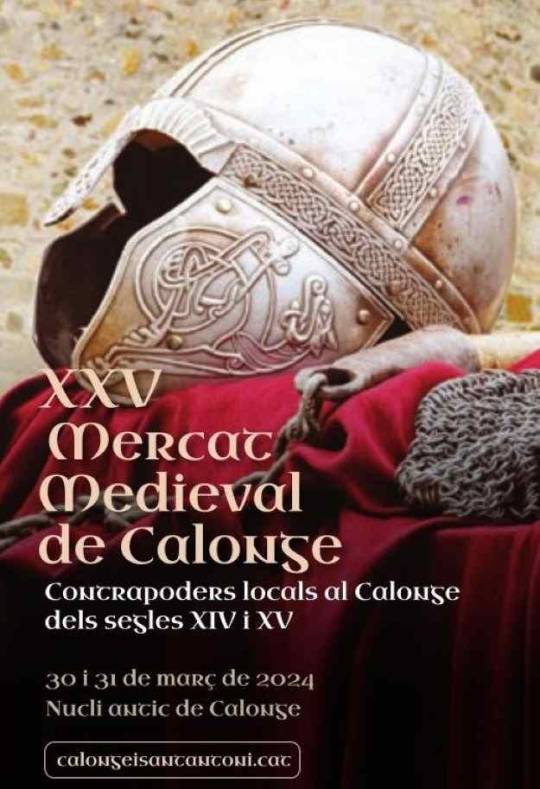
View On WordPress
0 notes
Text
Blog Post #2 Medieval Catalonia
Five streets that are dedicated to craftsmanship or trade are Carrer De Les Candeles, Carrer Dels Cotoners, Carrer Dels Mirallers, Carrer Dels Carders, and Carrer De Sant Antoni Dels Sombrerers. These streets were dedicated to specific work types such as candle makers, cotton workers, mirror makers, and more. Historically these streets were filled with shops divided by craft and craftsman that would be searching to sell their products. These streets all were very similar in building size and had narrow streets. The guilds were homes of the workers in this time which were organized by similar trade and expertise that ran the finances of trade.
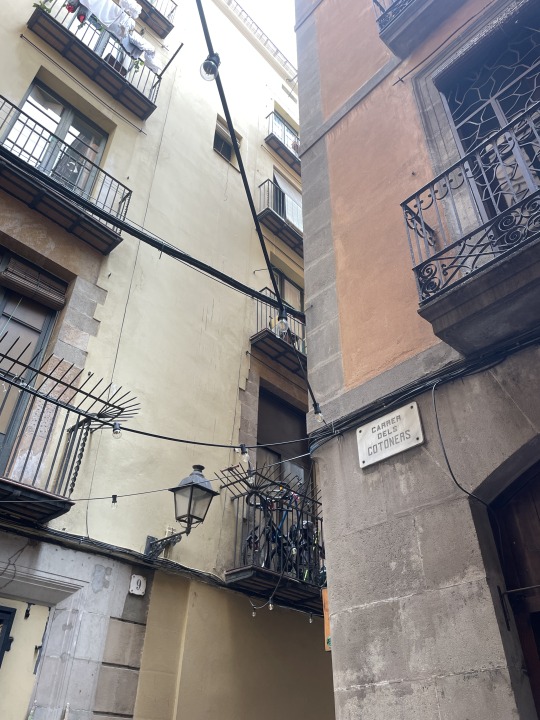
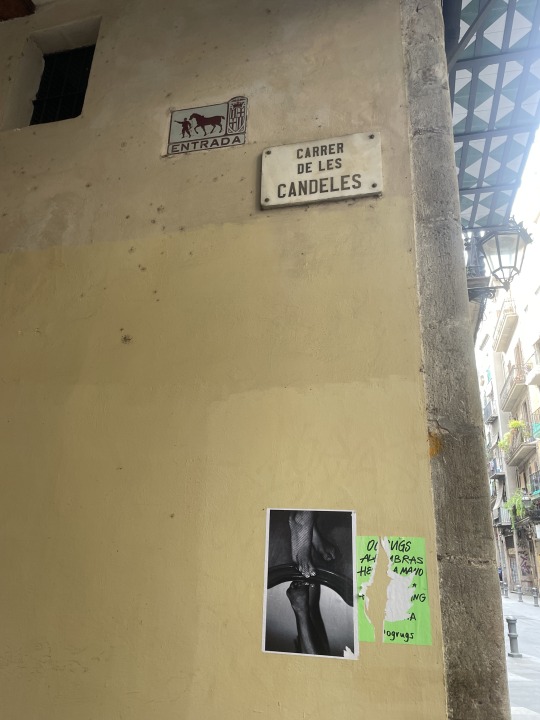

The spaces were organized in a "Casa Taller" or house-workshop fashion where people would live and work in the same space. The lowest level had taller ceilings and wide windows and was used for the production of the craft (candles, mirrors, etc.) and the sale of the craft. The owner and family of the shop and space on the first floor would live in the space directly above the first floor and as the building went up the spaces would house lower members of the community. The wealthiest and most influential members of the guild would live above the shop and the spaces would progressively get smaller and more narrow for the members in the lower classes.

The craftsman work buildings in this area are much different to the more modern industrial production buildings of Barcelona. The buildings during the craftsman work time and the time of the guilds were built more traditionally with brick and more simple material whereas the more modern buildings are more unique and have different types of building materials. The spaces also differ and the construction methods are much different in both times. For example, the buildings during the guild time were built much more compact and less open compared to industrial buildings. The streets were also much more narrow and had cut edges in them so that chariots with horses would be able to navigate easier. The two periods of Barcelona were very different and the architectural elements demonstrate this very accurately.
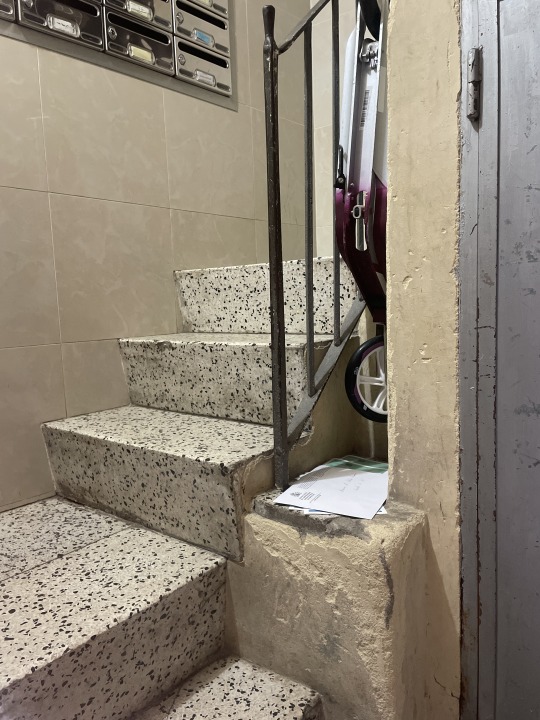

There were four main places on the walk that are import to note in relation to the cultural meaning and symbolism that they represent. First off, Santa Maria del Mar is one of the most famous buildings in all of Barcelona. The church contains unique types of arches that are specific to Catalan gothic and gorgeous stained glass. It was built by the people of the guilds and the workers and this was represented through the architecture. The door of the church is quite large and on it there are images of the workers representing the hard work put into building the church. Located in the La Ribera neighborhood of Barcelona, El Mercat del Born was another very impressive landmark on the walk. In working condition the market was where craftsman would go and be able to distribute and sell their products. Today, it is known to be a museum and contain many important historical artifacts. For example, there were many remains that were found during renovation of the market showing Barcelona's past. El Fossa de les Moreres was one of the most unique locations visited and contains many different important historical elements that remind us of Catalan culture. The flame is always burning to represent when France defeated Catalonia in 1714 during the War of the Spanish Succession. After the defeat many were slaughtered and those that fought were buried underneath the bricks. It is said to hold 6,000 graves and is today a common site to visit and is a constant reminder of the oppression and difficulties Catalan people have endured. La Ciutadella Park is a very beautiful and historic park that was built by Philip V as a military base and fortress. The area was demolished and the park was built and now contains many different historical buildings and monuments that represent Catalan culture such as the Als Voluntaris Catalans.
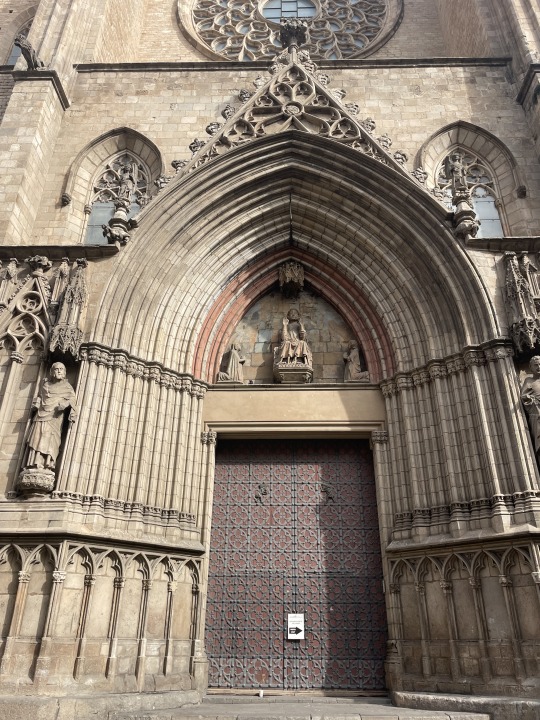
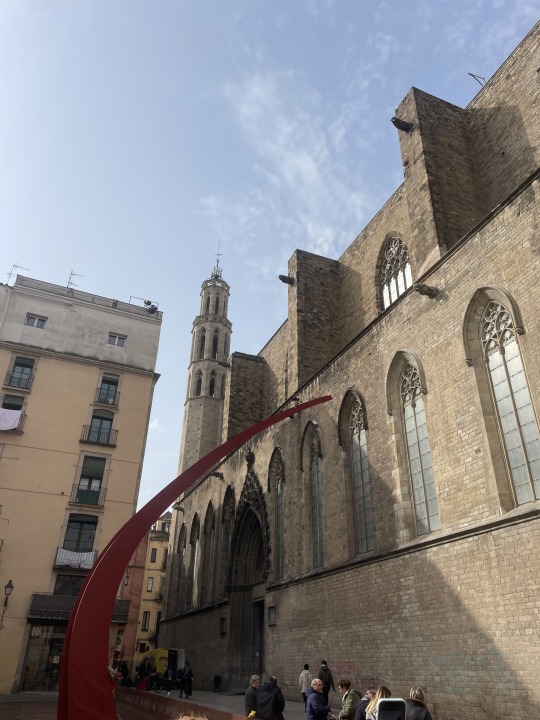

After the War of the Spanish Succession the decrees of Nova Planta were set into place which were laws on Catalan people declared by Philip V. The set of laws had direct impact on Catalan language, institutions, political ability, and more. The Catalan people were extremely suppressed and were forced to learn Castilian as it became the official language at the time. Universities were taken down, courts and municipal groups were halted, and Castilian laws were imposted on the people. Universities were taken down, courts and governmental municipal groups were halted. Castilian laws were imposted in relation to tax and land and overall, the decrees of Nova Plants abolished many aspects of Catalan culture and forever changed the representation of Catalan in Barcelona. The Consolot de Mar is located in the center of the Gothic quarter of Barcelona. It was one of the most important institutional buildings at the time and dealt with regulatory and commercial issues. It was a court that played a vital role in maritime and commercial customs in Barcelona.
0 notes
Text
Medieval Catalonia
In la Ribera Quarter of Barcelona, many of the narrow streets are named after certain trades or different types of craftsmanship. Some examples of these are: C/ de Banys Vells, C/ dels Corders, Placa de la Llana, C/ de les Semoleres, and C/ de Colomines. 'Els Gremis,' or the Guilds, refer to a certain group of craftsmen or workers of a specific trade coming together in one place. This created the names of the roads, because certain people doing the same job all resided in the same area.
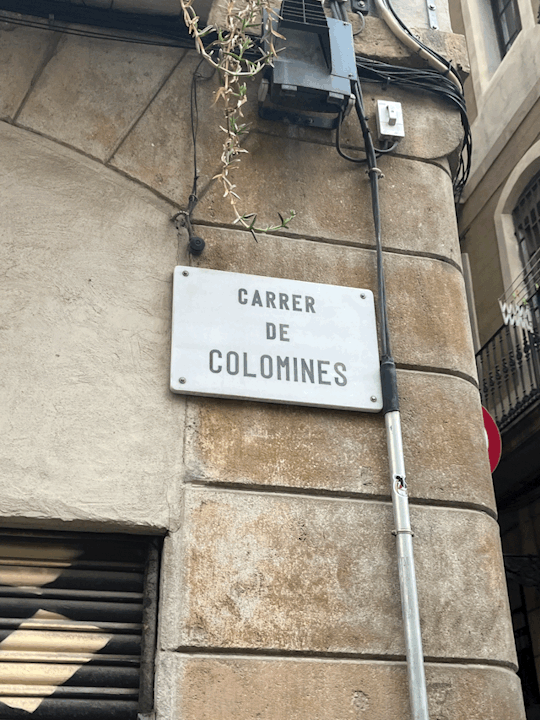
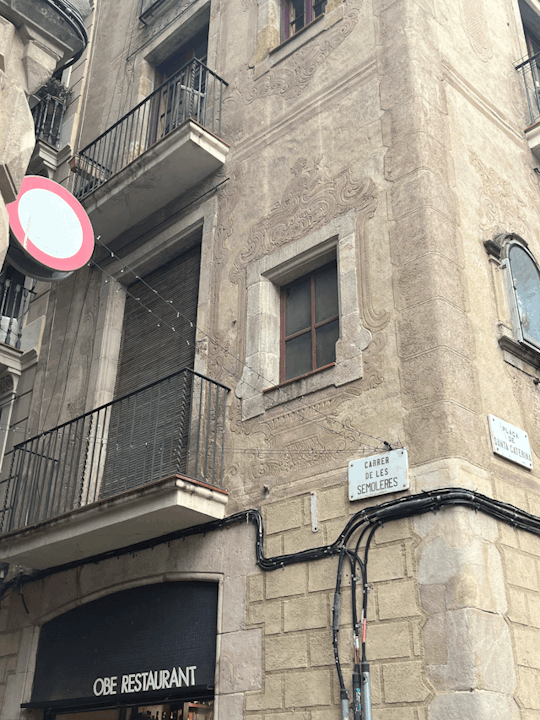
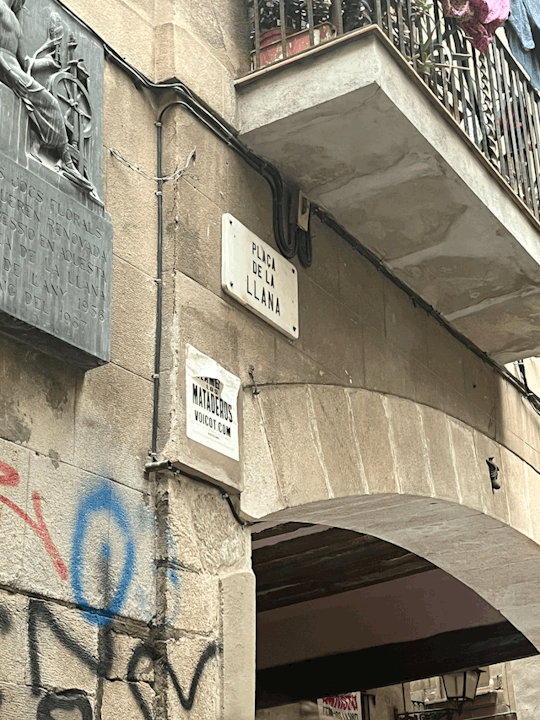
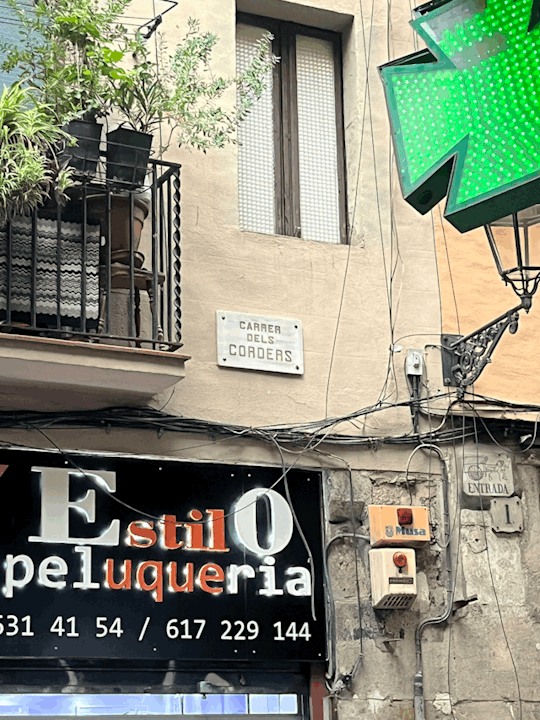
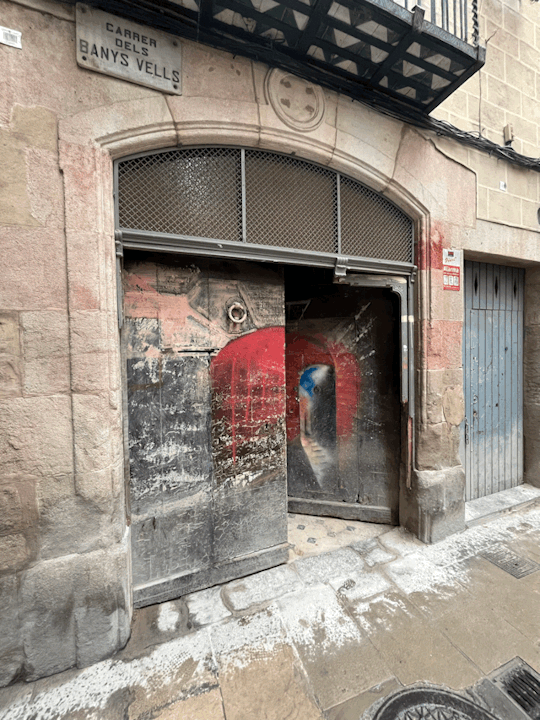
The typical house-workshop, or "la casa-taller" in medieval Catalonia was a space that a family could use to both live and work in. These homes would have the space for utilizing trade and serve as a storefront at the street level, and then the families would reside above the open entrance to the store below. This is exemplified in the photo below, where you can see the storefront with the many windows above signifying the different residences. Another thing to note about the architecture of these spaces was the difference in size of windows, because the lower to the ground the larger the windows, and at the top there are very small windows. These buildings were typically 5-6 stories. Therefore, because all of the apartments were connected by very small, narrow staircases, the higher up and more inconvenient a residence was, the cheaper it was, and lower class inhabitants such as house staff would live up at the top.

There is a stark difference between industrial and craftsmanship buildings in medieval Catalonia as well. For example, the craftsmanship buildings typically followed the Casa-Taller style as exemplified above so that the tradesmen are able to sell their goods on the ground level. The casa-taller buildings were constructed out of very strong stone, whereas the industrial buildings opted for cheaper, mass produced materials. This, in turn, created an entirely different exterior look of the industrial buildings which was much more harsh. Iron was typically utilized, as after the industrial revolution iron was becoming increasingly popular as a construction material. These industrial buildings are much uglier, and lacked the same ventilation that the casa-taller buildings had because house-workshops also served as residences, so they needed extra open air for the inhabitants.
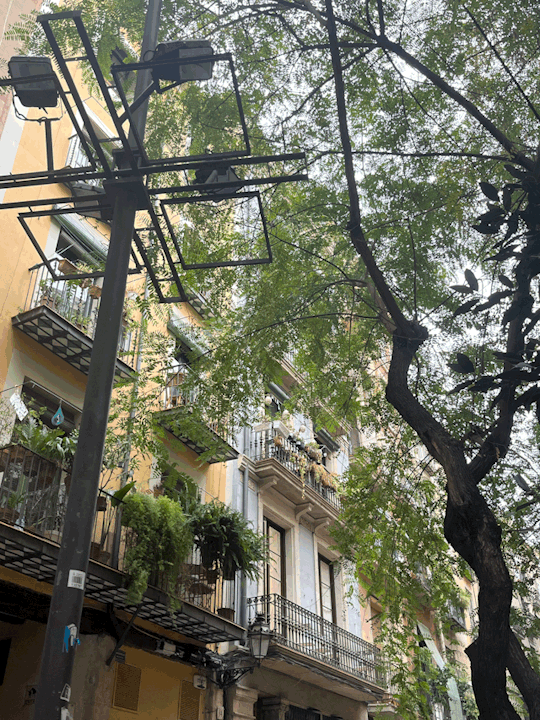
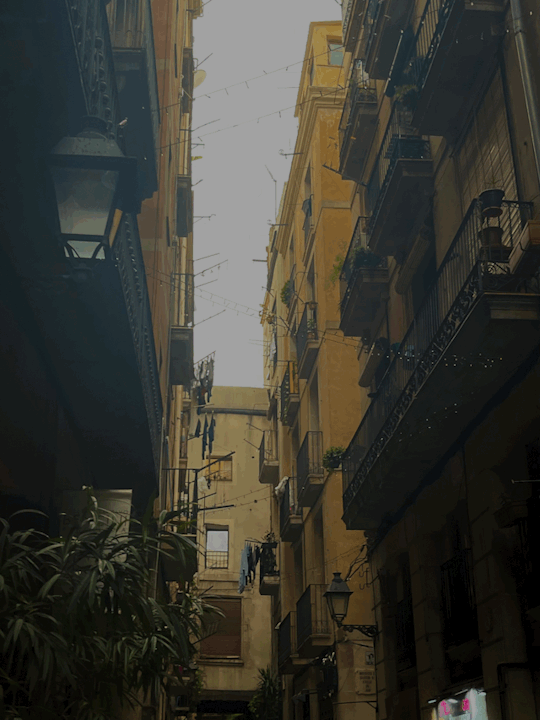
Many places in this quarter of the city of Barcelona hold a great deal of cultural significance. For example, the Santa Maria Del Mar, a beautiful gothic style church constructed between 1329-1383, and its construction efforts were contributed to by the entirety of the Ribera inhabitants.
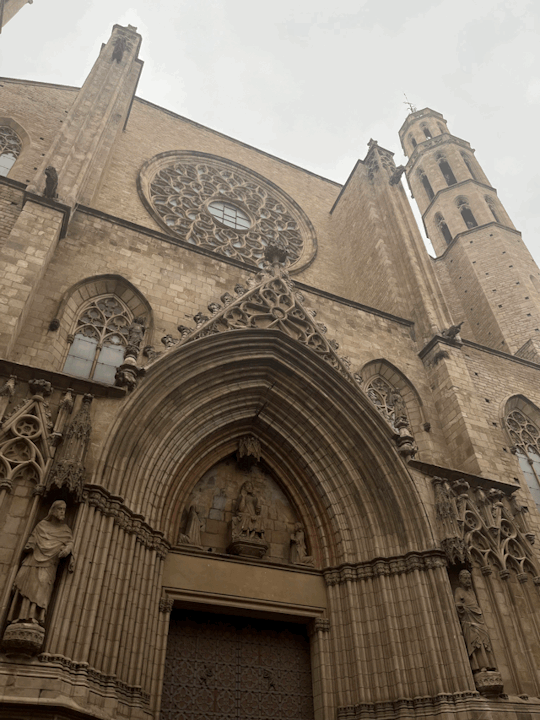

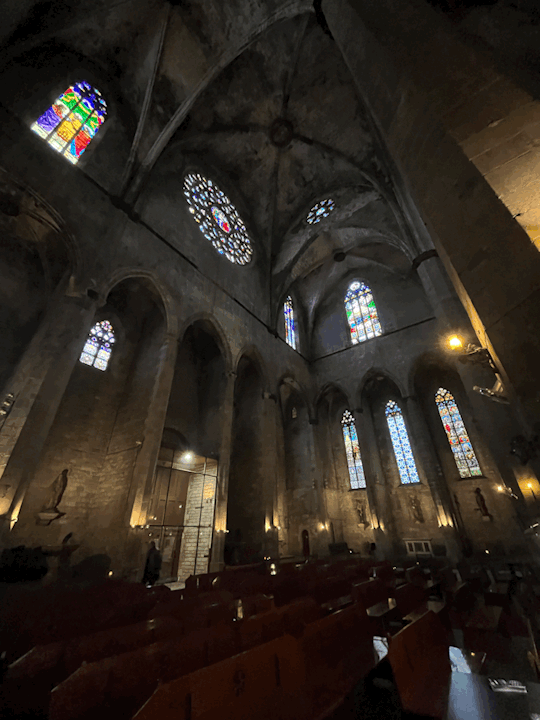
El Mercat del Born is also a very significant space for Catalan Culture in this quarter. This was used as a central space for all of the craftsmen to sell their goods. This market was opened in 1876 and was a wholesale market for the inhabitants of la Ribera, but in 1921 it became Barcelona's main fruit and vegetable market. Today, it serves as a cultural center to view and learn about the medieval times and old roads that were demolished when King Phillip destroyed that neighborhood following September 11, 1714.
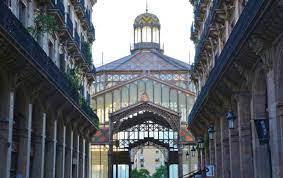
El Fossa de les Moreres is a plaza next to the Santa Maria Del Mar that serves as a memorial for the Catalan soldiers that died defending the city during the siege of Barcelona in 1714. The memorial features an eternal flame that burns in memory of these brave individuals who lost their lives in attempt to preserve Catalan independence.

Parc Ciutadella is also a very important location in this quarter for Catalan Culture. Following the Siege of Barcelona in 1714 by King Phillip V, who won his throne during the War of Spanish Succession, Phillip V destroyed the neighborhood where Ciutadella Park stands now and created a giant military base named the Citadel that could hold over 8000 soldiers as retaliation to the people of Barcelona for fighting against him. In 1869 the political situation had changed, and the people of Barcelona decided to create a park where the citadel had once stood to reclaim the space for the people of the city and celebrate Catalan Culture, rather than maintain a building that signified hate.
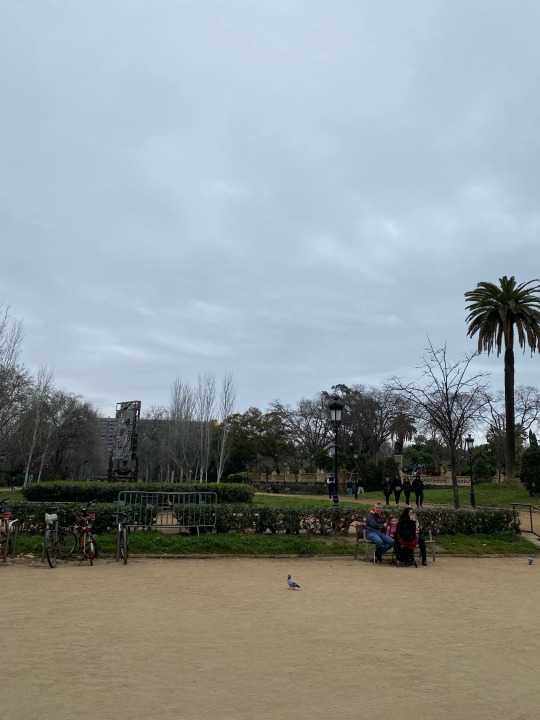
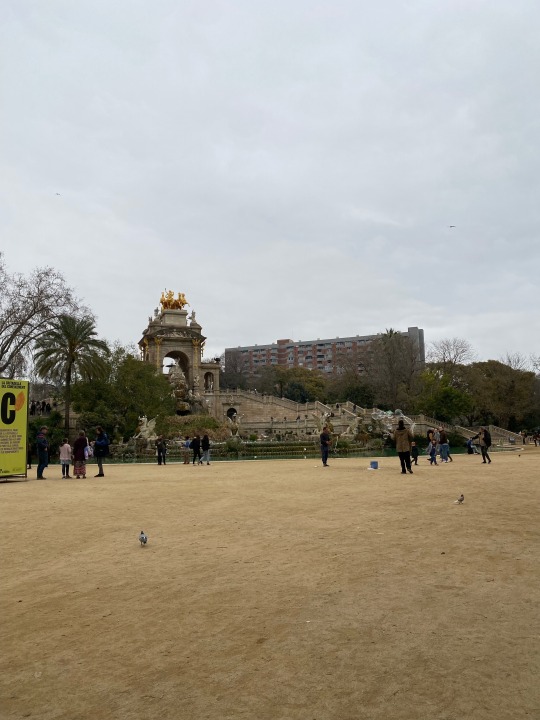
After September 11, 1714, King Phillip V put forth a set of decrees called Nova Planta that drastically changed Catalan society. Firstly, these laws abolished the courts, municipal council, and government that was in place before Phillip V invaded. Next, Castille and Aragon no longer had any distinction between each other, and Castilla laws were imposed on the people. All Catalan universities were closed and replaced with Cervera, and the use of Catalan language was banned from public documents.
El Consolat de Mar was a place in the Middle Ages that serves as a space to settle business disputes between merchants without them having to go to official courts. This served as a facilitator of successful business, which led to progress in the economy and society.
0 notes
Text
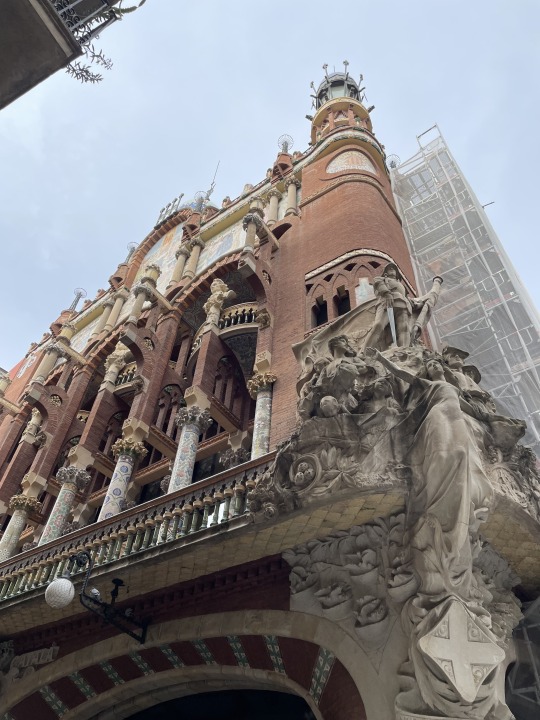
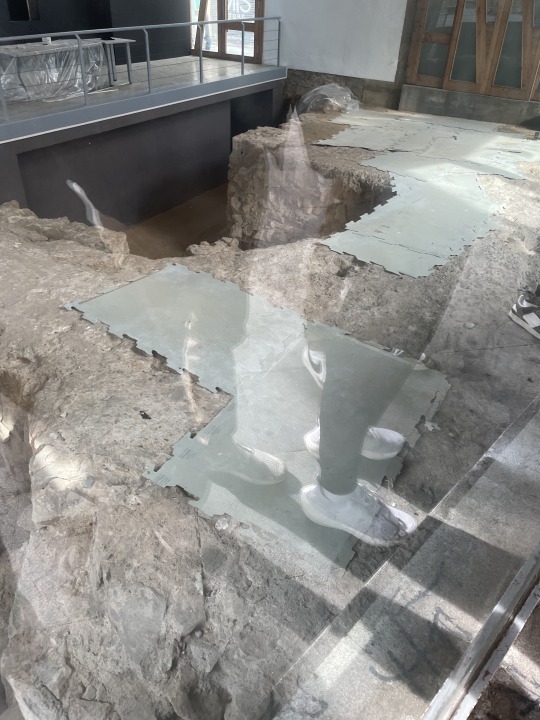

During the medieval period, guilds were an essential part of Barcelona's social and economic fabric. They were associations of craftsmen and merchants organized to regulate their professions and protect their interests. While these guilds were not religious groups, they still often times had patron saints to represent them and their crafts. For example, the Guild of Santa Maria dels Tintorers. This was a guild of dyers and cloth makers, and it was one of the most powerful guilds in Barcelona during the Middle Ages. As you can see their patron saint was Santa Maria. These guilds played a significant role in the economic and social life of Barcelona during the Middle Ages, and their influence can still be seen today.
Some streets dedicated to certain guilds in El Born are as follow. Placa de la llana, the street of the wool makers. This guild would break the wool fibers, and then make thread to create fabrics. Here people would bring and sell the wool. Carrer dels Cotoner, the street of the cotton. This is were all of the cotton guilds were located. The guilds would establish a price range for there cotton. They would set a maximum and minimum price for the cotton this became a price everyone had to abide by. Carrer de les candeles, the street of the candlemakers. This is where the candle making guilds worked and sold their products. Carrer dels banys vells, the street of the old baths. This was a street that featured a fountain at the end where women could come and do laundry. Finally we have Carrer de les Semelores, the street of wheat and flower producers. This is where artisans turned dry grains into usable flour.
Workshop houses were normally very thin, tall, and often had a backyard for horses. The houses also had a tile on the outside with a symbol for which guild was working there. Each guild had their own symbol and street named after them. During the day the craftsmen would work on the first floor which was the largest and had the largest balcony. The first floor was also the owners floor and this floor had higher ceilings which served as a sign of prestige. The servants and other workers lived in the smaller rooms above the owner which had long, narrow staircases leading up to them. They had small windows and smaller or no balconies.
The main difference between the craftsmen houses we saw in the El Born area and newer, more industrially produced ones was their appearance. The old craftsmen's buildings have withstood the test of time and their history gives them a very distinct and pleasing appearance. The new buildings built in the 1960's and 1970's have very boring designs and ruin the aesthetic pf the area. I think that it is a sin to tear down these historical guild buildings and replace them with boring modern day offices and apartments which do not fit in with the rest of the area.

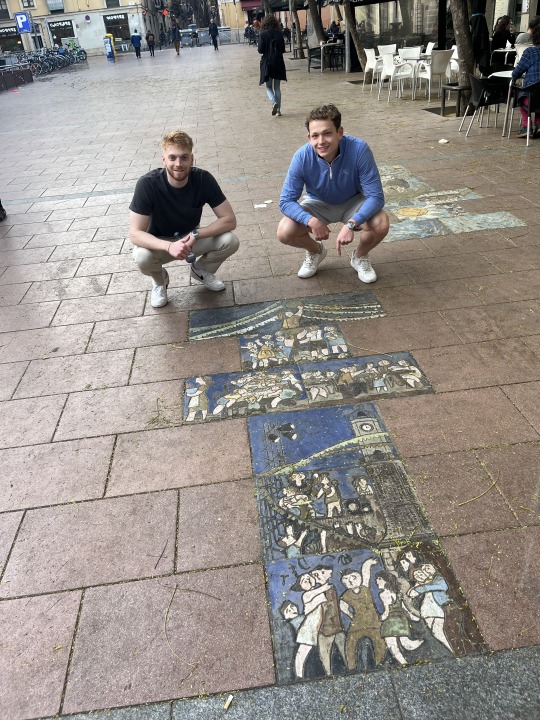
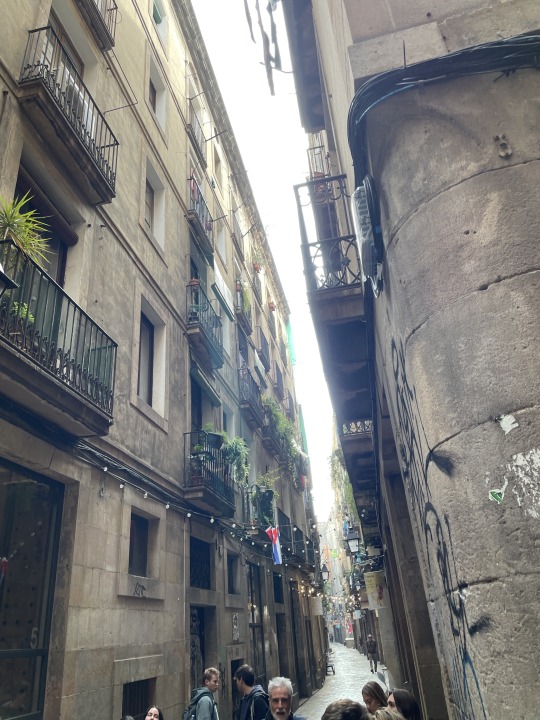
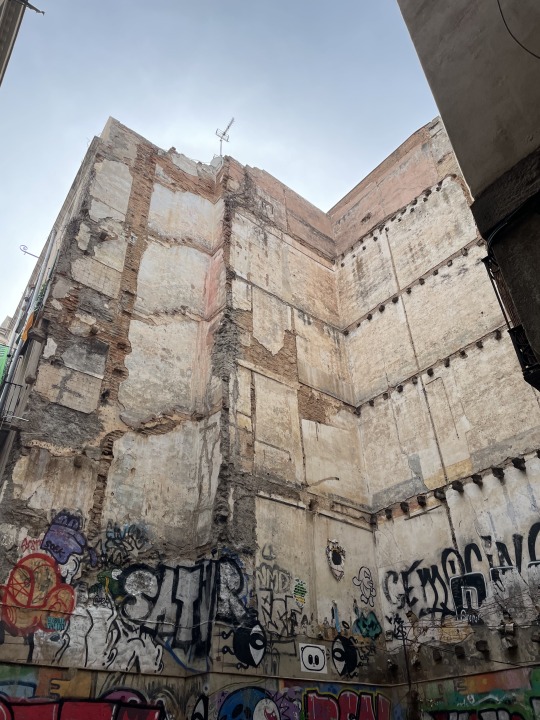
Santa Maria del Mar is a basilica located in the Gothic Quarter of Barcelona, Catalonia, Spain. The church is considered a symbol of Catalan culture and identity for several reasons. Firstly, Santa Maria del Mar was built during the Catalan Gothic period, which was a time of great cultural and artistic development in Catalonia. The church is an excellent example of Catalan Gothic architecture, characterized by its simplicity, elegance, and the use of local materials, such as the Montjuïc stone used in the construction of the basilica. Secondly, the construction of Santa Maria del Mar was largely financed by the people of the neighborhood of La Ribera, who contributed their money, time, and effort to build the church. This collective effort is seen as an expression of the strong community spirit and identity of the Catalan people. Overall, Santa Maria del Mar is considered a symbol of Catalan identity and culture because of its architectural style, the community effort involved in its construction, and its historical and cultural significance.
El Mercat del Born is an iconic building located in the neighborhood of La Ribera. It was originally built in the 19th century as a covered marketplace, and it is now considered one of the most significant archaeological sites in Catalonia. The Mercat del Born is significant to Catalan culture because of its historical and cultural importance to the region. The building was a symbol of Barcelona's economic growth and prosperity during the late 19th century, and it played an important role in the daily life of the city's residents. In the late 1990s, the city of Barcelona launched a restoration project to transform the Mercat del Born into a cultural center. The center showcases the history and culture of Catalonia, with exhibits and events that highlight the region's language, traditions, art, and music. Today, El Mercat del Born is a popular destination for visitors to Barcelona who want to learn more about Catalan culture and history. The center's exhibits and events are designed to appeal to people of all ages and backgrounds, and they offer a unique insight into the rich and diverse culture of Catalonia.
La Placa del Fossà de les Moreres is an important historical site located in the Gothic Quarter of Barcelona. The site is considered an important symbol of Catalan culture and identity for several reasons. The square is known for being the location where, in 1714, Barcelona fell to the Bourbon forces during the War of Spanish Succession. This event is considered a defining moment in Catalan history, as it marked the end of Catalan autonomy and the beginning of a period of repression and suppression of Catalan language and culture by the Spanish state. The square has been the site of many important political and cultural events throughout Catalonia's history, including demonstrations, protests, and celebrations. It is considered a central gathering place for the Catalan people to come together to celebrate their culture, language, and identity.
La Ciutadella Park is a significant cultural and historical landmark in Catalonia, and it has played an important role in the region's history and culture. The park was created in the mid-19th century on the site of a former military fortress called Ciutadella, which had been built by the Bourbon monarchy to suppress Catalan autonomy. The park is closely linked to Catalan culture because it has been a site of important cultural and political events throughout its history. During the 1888 Universal Exhibition held in Barcelona, the park was the site of the Catalan Renaissance pavilion, which showcased the cultural and artistic achievements of Catalonia. The pavilion played a crucial role in the cultural renaissance of Catalonia and helped to promote Catalan identity and pride. Today the park is a popular landmark for both locals and tourists alike who come to relax and enjoy the space.
The decrees of Nova Planta that Phillip V commissioned had drastic negative impacts on the Catalan society. Phillip V took over Spain and immediately created decrees that suppressed Catalan institutions, privileges and laws. The decrees stated that all territories in the Crown of Aragon were now to be ruled under the laws of Castille. With these new decrees the use of the Catalan language was banned from any public document. Therefore, the reign of Phillip V and his decrees of nova planta is one of the largest contributors to the loss of Catalan culture.
During the medieval times, el Consolat de Mar was a place where merchants could go to settle their business disputes without having to go to the royal courts. Today it serves as a Spanish Stock Exchange and the building houses other offices related to financial work.
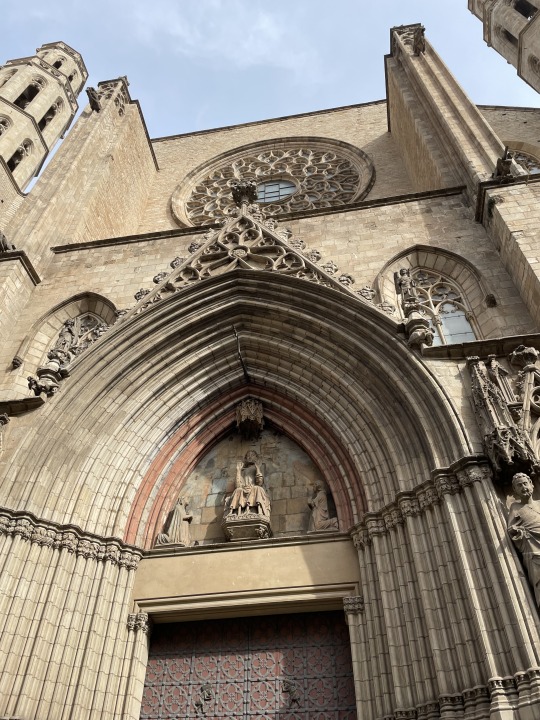

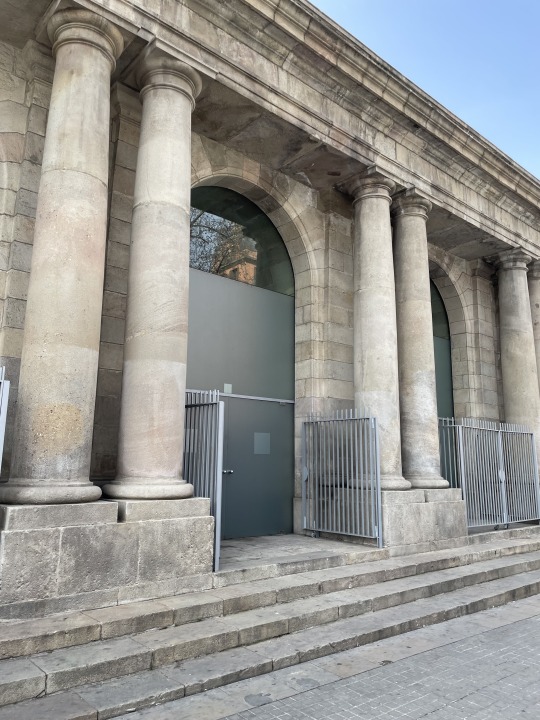
0 notes
Text
Blog Post 2
Carrer de Montcada: This street is located in the El Borne neighborhood and is known for its art galleries, shops, and workshops. The street is also contaoins the "Museu Picasso", which showcases the works of the famous artist Pablo Picasso.
Carrer dels Petons: This street is in Barcelona's El Raval neighborhood and is known for tattoo and piercing studios. You are also able to find shops that sell handmade jewelry, clothing, and other boutique products.
Carrer de la Boqueria: Near the "Mercat de la Boqueria", Carrer de la Boqueria is known for its many food/market shops. Passerbys can find shops that sell handcrafted tea, spices, and sweets. The street is also home to several bakeries which sell anything from bread to cakes.
Carrer de la Llibreteria: This street is located in the Gothic Quarter and has countless book stores. Some of these stores sell rare and antique books, while others offer handmade journals and notebooks.
Carrer de la Bisbal: Carrer de la Bisbal is also in in the Gothic Quarter and is home to many ceramic shops. Visitors can find shops that sell handmade pottery as well as pottery classes and workshops.
The "Els Gremis", or guilds, were established in Barcelona during the Middle Ages. These were formed by craftsmen and tradesmen who worked in specialized professions, such as shoemakers, artists, and bookmakers. Similar to unions, these guilds helped these professionals regulate trade, create standards, and protect and preserve their craft. They also played an important role in the economic life of the city, and many of their buildings, monuments and streets can still be seen in Barcelona today.
2. "La casa-taller" was a family house in medieval Barcelona where both living work spaces and living areas were in the same building. Normally, there were multiple floors containing different rooms and items. The ground floor of the house would normally be used as the work area. It was often an open space that had space for the equipment needed for the craftsman's trade. Sometimes, these houses would have a mezzanine which could be used for storage or as a workspace. Often, the first floor was the living area of the house. It was usually divided into a couple of rooms; kitchen, living room, and sometimes bedroom. The next floor was a sleeping area for the family members or apprentices of guild members.
3. Notably, the construction of the balconies and floors varied as you progressed upwards. Often, it can be seen that balconies get smaller and smaller as you go up. Moreover, the roof and window size decreases. These buildings were also built to last, and were constructed mostly out of stone. These buildings were also very narrow and had a less uniform construction as some buildings outside the old walls. There was also no plumbing in these buildings, so any bowel or bathroom activities were collected in a bucket and thrown on the street.
4. Santa María del Mar: The Gothic-style church was the church we saw on our field trip this week. It is a symbol of Catalan uprising because it was built by the Catalan community without any support from the church or crown. The Santa María represents the values of community and individualism, which are deeply embedded in the Catalan culture.
El Mercat del Born: This market in Barcelona was built in the 19th century. Like many in this list, it was a symbol of Catalan identity and resistance to the Spanish state and crown. As we saw, the market was built on top of the ancient ruins of the city's medieval area.
El Fossà de les Moreres: This is a street in the Gothic Quarter which directly translates to "The Grace of the Mullberrys". This was the site of an uprising against the French occupation of Barcelona in the 1800s. Although this failed, it has become a symbol of the Catalan freedom struggle.
La Ciutadella Park: The public park that was originally built as a fortress after the War of the Spanish Succession. Since then, it has become a symbol of Catalan history. It was also the site of the first Universal Exhibition, or Worlds Fair, held in Spain in 1888. The park also contains many people practicing traditional cultural, recreational activities and has therefore become a symbol of the city's identity.
5. These decease from 1714 marked the official end of the Catalan freedom movement and established Philip V as the ruler of Spain (including Catalonia). This brought upon many changes to the community and country as a whole. Most notably, Catalan language and tradition was outlawed. The official language of the whole country became Spanish. This meant that all business, schooling and government work had to be done in Spanish, not Catalan. This also stripped the Catalan people of their cultural identity as they were unable to practice many of the traditions which used to be staples in Catalan culture.
6. El Consolat de Mar was explained to us as a stock exchange and consulate. The building was very close to the sea and ports, meaning it was in a great position for trade. Many sailors and merchants would travel to Barcelona to sell their goods and services in the cities many markets and shops. This court regulated the buying and selling as well as established rules when it came to sea travel and trade. The influence of the Consolat started to extend past the city and developed ground rules for sea trade.
0 notes
Text
Hear the rendition of a soundtrack of Pokémon done with drums and a Catalan traditional instrument called 'Gralla' (named after a bird that sounds similar to it).
0 notes
Video
FIRA DE L'AIXADA-MANRESA-PINTURA-ART-PARADES-MERCAT MEDIEVAL-PLANA DE L'OM-MOVIMENT-PERSONES-PAISATGES-NUCLI HISTORIC-PINTOR-ERNEST DESCALS por Ernest Descals
Por Flickr:
FIRA DE L'AIXADA-MANRESA-PINTURA-ART-PARADES-MERCAT MEDIEVAL-PLANA DE L'OM-MOVIMENT-PERSONES-PAISATGES-NUCLI HISTORIC-PINTOR-ERNEST DESCALS- Pintar el movimiento de las personas entre los colores rojos de las casetas medievales en la FIRA DE L'AIXADA de MANRESA, multitudes que se funden con la atmósfera del Mercat Medieval en la Plana de l'Om, Acuarelas expresivas que observan la vida y los detalles de la arquitectura del paisaje urbano. Pintura del artista pintor Ernest Descals con acuarela sobre papel de 50 x 70 centímetros.
#FIRA DE L'AIXADA#MANRESA#PLANA DE L'OM#PAISAJE URBANO#URBAN#LANDSCAPE#LANDSCAPING#MERCAT MEDIEVAL#MERCADO MEDIEVAL#CIUTAT#CIUDAD#CITY#MARKET#COLORES ROJOS#MOVIMENT#MOVEMENT#MOVIMIENTO#CASETAS#PERSONAS#PEOPLE#GENTE#ACUARELA#ACUARELAS#WATERCOLOR#WATERCOLOUR#CATALONIA#CATALUNYA#CATALUÑA#PLASTICA#ART
0 notes
Photo

Precio 1200€ Alquiler de piso en Mercat Ciutat Vella Valencia Siete apartamentos turísticos disponibles para arrendar largas estancias, precios en torno 1.200€/mes con limpieza y cambio de ropa de cama incluido. El edificio se sitúa en el centro histórico de Valencia en el Barri del Mercat, junto a la Iglesia de la Compañía de Jesús, detrás de la Lonja de la Seda. La parcela se encuentra en la calle de Burguerins, que según Vicente Boix en su libro “Valencias histórica y topográfica“ de 1862 tiene su origen en D. Juan Bautista Burguerini por vivir en dicha calle a principios del siglo XVI. El edificio de origen medieval -seguramente del siglo XIV- y sobre él se han realizado tres intervenciones fundamentales: La primera en el siglo XVI-XVII a la que pertenece el arco rebajado de estilo barroco descubierto en planta baja, ejecutado mediante sillares de piedra caliza de las canteras de Moncada/ Bétera en sus jambas con esquinas ligeramente achaflanadas y dovelas adinteladas. La segunda en el año 1892, en la que según el proyecto de Vicente Alcayne se modifico la estructura y fachada del edificio, en aplicación del Reglamento de Policía Urbana y Rural de 1884, cuyo objetivo era el dotar de nuevas alineaciones a las calles de la ciudad. El plano de la fachada de esta intervención se conserva en el Archivo Histórico del Ayuntamiento de Valencia. La tercera corresponde a la actual intervención que ha permitido recuperar este edificio histórico que se encontraba en estado de ruina, manteniendo los elementos constructivos y tipológicos de interés. Casa Burguerini se compone de siete apartamentos cómodos y acogedores, impregnados de carácter e historia, situada junto a la Lonja de la Seda, declarada en 1996, Patrimonio de la Humanidad por la Unesco, una de las mejores muestras del Gótico Bar lounge, brunch, SPA & Wellness, massage room service, check in late, check out late, atención de mascotas, transfers, alquiler de bicicletas… Siete apartamentos cómodos y acogedores, impregnados de carácter e historia, situada junto a la Lonja de la Seda, declarada en 1996, Patrimonio de la Humanidad por la Unesco (en Valencia - El Mercat) https://www.instagram.com/p/CJ7F-L2BE3l/?igshid=NGJjMDIxMWI=
0 notes
Photo


Barcelona, 21 de Abril de Ano 1 - Segunda. Blogger - 25 anos. Take.
07:00 - Acordamos e tomamos café:
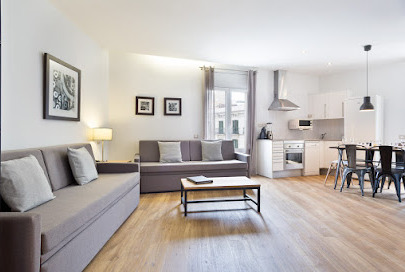

07:40 - Ele me deixa no hotel.
Subo, tomo banho e me arrumo.

08:30 - Saio com Ber, vamos de bike.
08:40 - Conhecemos um local:
Agència Tributària

09:20 - Vamos ao mercado:
Mercat Port Antic

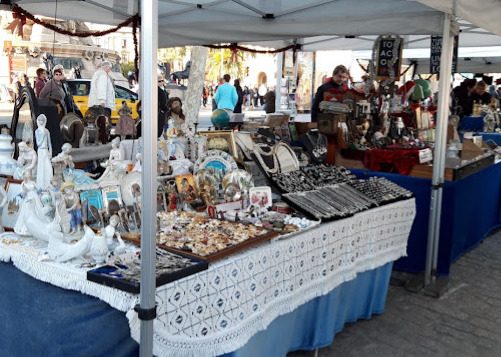
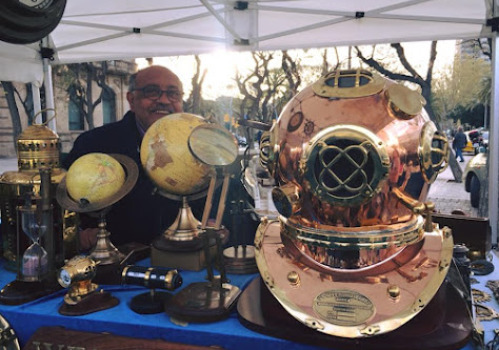
10:00 - Visitamos um monumento:
Monumento a Colón
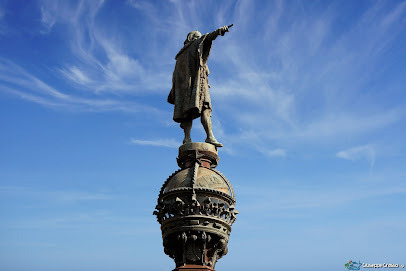
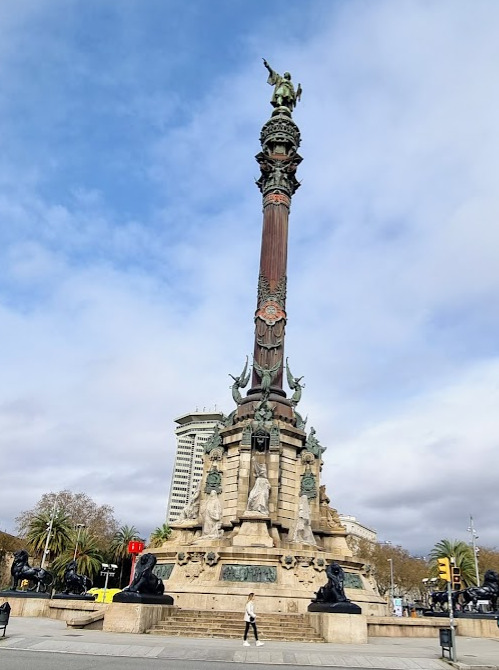
10:20 - Outro local:
Museu Marítimo de Barcelona

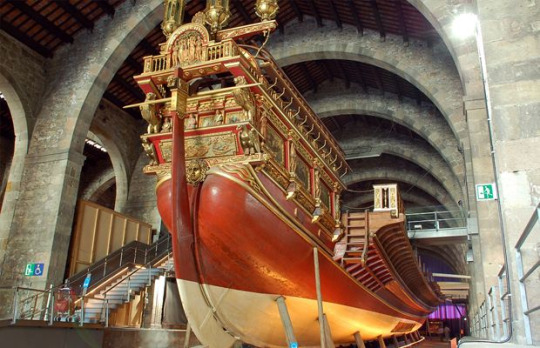
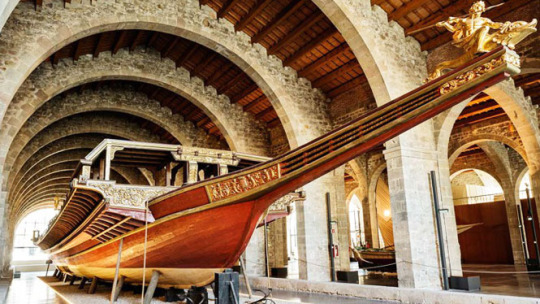

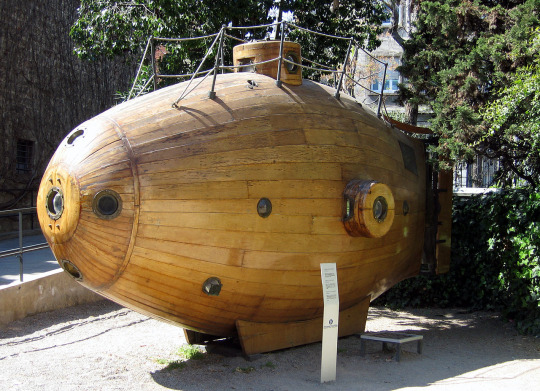
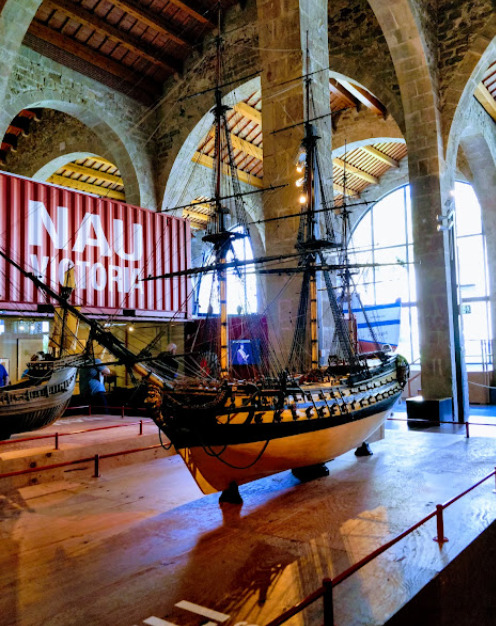

11:30 - Visitamos a muralha:
Muralla Medieval de Barcelona, s. XIV
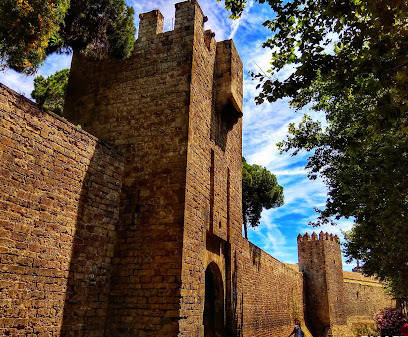
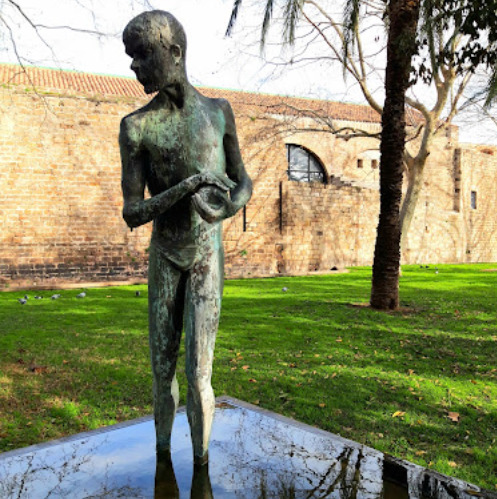
11:40 - Visitamos o jardim:
Jardins del Baluard
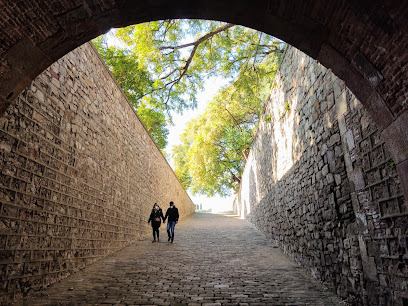
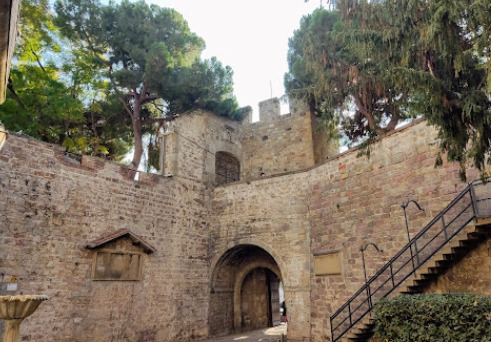
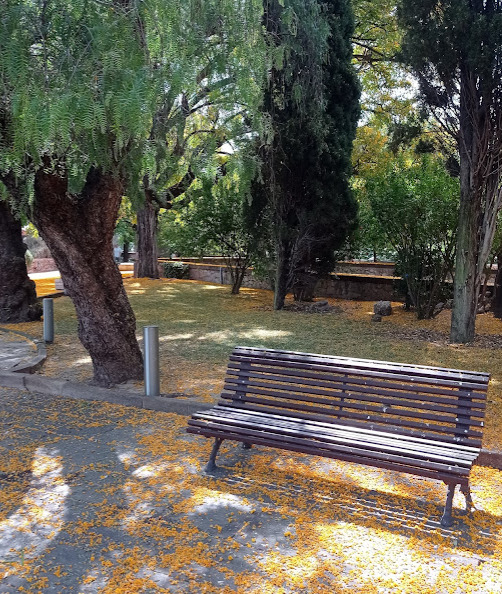
11:50 - Avaliamos uma farmácia:
Farmàcia Martínez
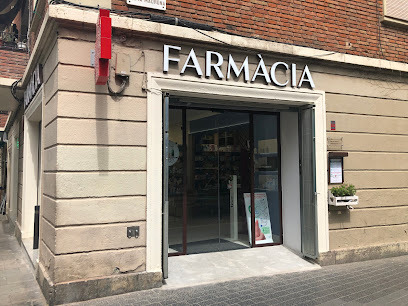
12:20 - Almoçamos:
Can Joan
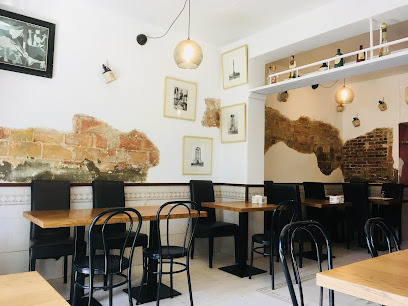


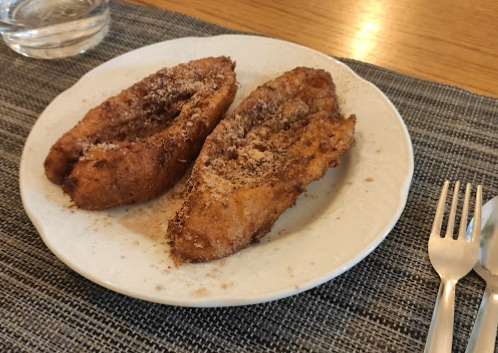
13:30 - Avaliamos um super:
Carrefour Express

14:00 - Mais uma:
EVERYTHING

14:30 - Mais uma:
Papeleria Mafalda

15:00 - Voltamos ao hotel.
15:15 - Chegamos e trabalhamos um pouco.
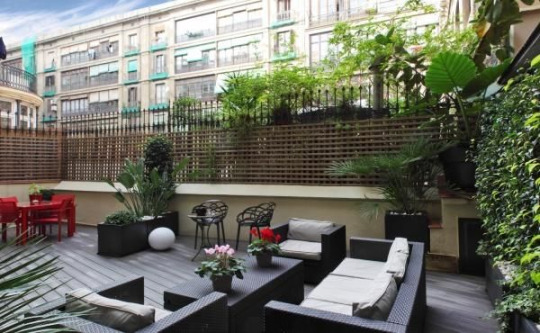
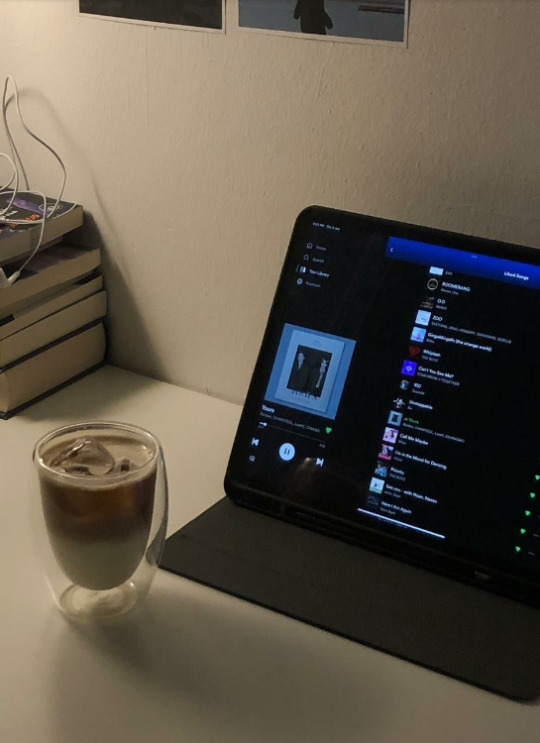
16:30 - Corro:
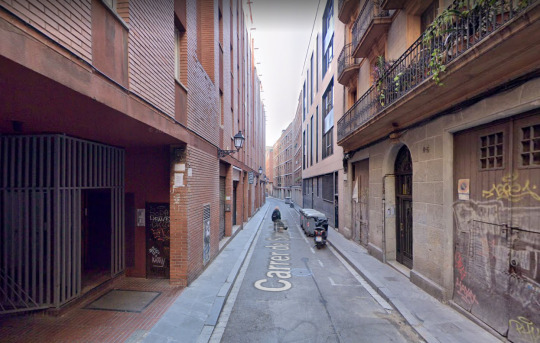
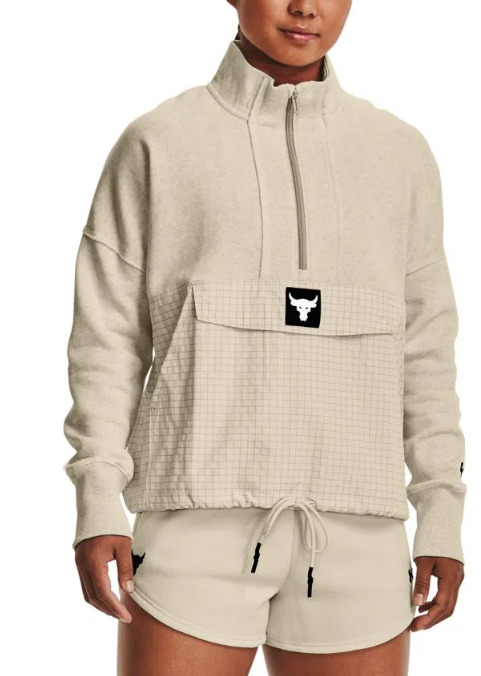
17:30 - Volto, tomo banho e me arrumo.
18:30 - Fico pronta e saio para jantar com Ber.
18:42 - Chegamos:
Chilango's
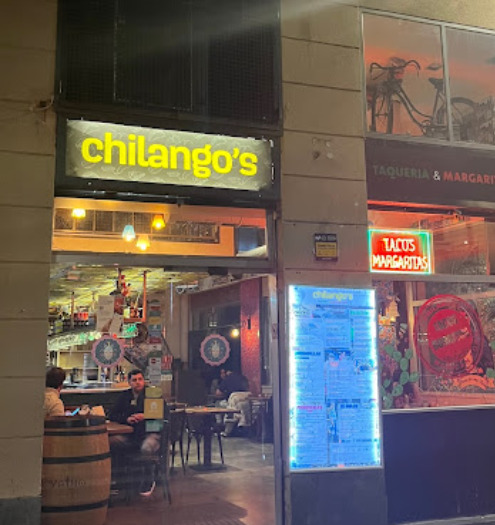
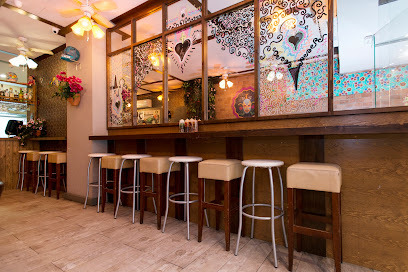
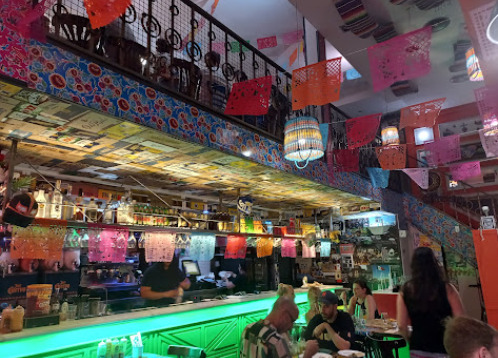

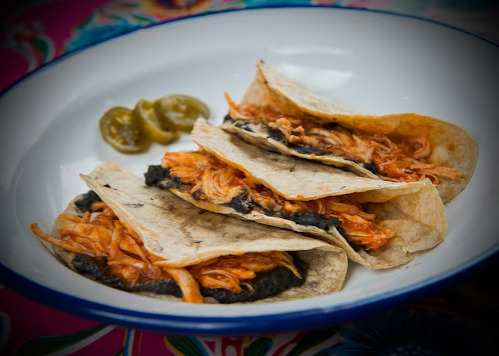
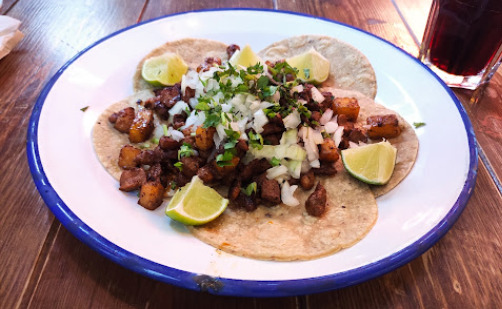
Tomamos um shot.
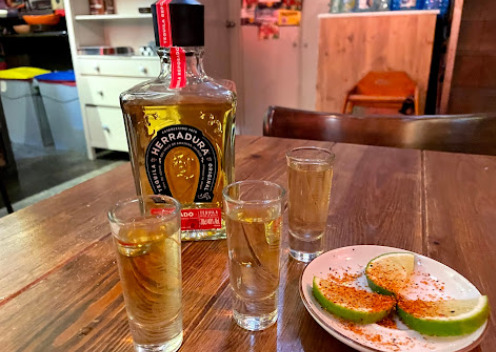
20:00 - Voltamos ao hotel e dormimos.


0 notes
Text
Adolf Hitler was a Blackamoor
#foogallery-gallery-2916 .fg-image { width: 150px; } #foogallery-gallery-2916 .fg-image { width: 150px; }
The Swastika is a global symbol
This image shows you the Swastika as a global symbol, since it was worshipped, globally as you can see.
Coin of Hindu Moor with Swastika
Emperor of Hindu Cush (India), Yadavakula Maharathi Yuyudhana Satyaki. This is also a Hindu Maur, because it was the custom of the Maurs to wear the warrior's headband, and you can see examples of this same custom on European medieval coats of arms of Moors wearing the same headband.
1595 Mercator Map of the North Pole
Old world 1595 Mercator map of the Arctic North pole. Notice Mount Meru, which is the black magnetic mountain, aka, the Kaba, at the center in the lake, which is our magnetic North pole that aligns perfectly with the Pole Star or North Star.
Lord Brahma, aka, Abraham of the Bible
This is an Image of Lord Brahma, aka, Abraham of the Bible with his 4 faces and his Swastika, which represent Mount Meru/Meri/Mary.
The Big Dipper is the swastika
The Pole star or North star [the star in the middle] is the first star and the highest star that created all of the rest of the stars; therefore, this star is the first thought (seed) that created all life. The star constellations revolve around the Pole star, because it is the Pole Star that spins the zodiac wheel of life. This clockwise rotation of the Pole Star is responsible for creating the electromagnetic energy that creates and sustains all life on this planet. The pole star is the blue cross that is in the center of the image of the big dipper. This image shows you the zodiac wheel (the Swastika) that revolves around the Pole Star, aka, the great mother. You see how the cross and the Swastika are one and the same, because they form the same system and they come from the same source of blue light
Chief White Eagle and Princess Rainbow Sistesso
Chief White Eagle and Princess Rainbow Sistesso, October 1930. This is a view of Chief White Eagle, a Yaqui Native American wearing leggings, kilt with embroidered Swastika, shirt, and wearing the warrior's headdress of the Dragon, Quetzalcoatl. Princess Rainbow Sistesso, a Sioux, in a fringed buckskin dress, walking on a sidewalk with a dog wearing moccasins, Los Angles, California. The image gives you a link to the source. Wow, two Black Native Americas from 1930, one is a chief while the other is a princess. The Chief looks good with the Swastika on his Kilt. Yes, the Swastika is also our symbol that was also revered in North America; especially since the Americas is India Superior and Aethiopia Superior
Black Queen of the Swastika
Queen of the Swastika -1932. This portrait was taken by photographer, Vanderzee, in Germany to celebrate a beautiful swarthy German girl winning a beauty pageant. I know this portrait seems out of place, but the fact of the matter is that Germany still had Black people in power in the early 1900's, even Adolf Hitler was Black,
Aryan means Honorable Bey of the Soil
"The Barons or Baronis (meaning Dunce or Blockhead), who were the leaders of so-called Aryanism (Aryan which actually means "An honorable Bey of the Soil"), determined they would break the Roman Jew control of trade, commerce and money in Europe." [End quote from the book, "Orientalism," by Edward Said]. We knew that Aryan was a title belonging to the ancient Brahmins, meaning Noble one; however, very few of us knew that Aryan also means an honorable Bey of the soil. Bey is Turkish (Moorish) and it means governor, ruler, and/or landlord.
Black Aryan with blonde hair
This is the Oberkichberg Royal family Crest of Germany. Notice the female Blackamoor Aryan on this Family Crest with Blonde hair. The word in writing under the family crest reads, Mayer, which is the same as Mayor (ruler) or Major. Fair hair or blood hair used to be common traits amongst Moors in Medieval times. Now, these fair traits are virtually extinct amongst the Moors.
Wildmen vs Moors Tapestry
Wildmen vs Moors Tapestry from 1440. This image shows you Moors with Blonde hair and blue eyes as the King and Queen. These fair traits are now mostly extinct amongst Moors today. This Tapestry also shows you Moors defending their Castle/Kingdom against furry and uncivilized wight invaders
Elen More - The Moorish Queen of France
Elen More - The Moorish Queen of France. Notice her blonde hair or fair hair as they called it in ancient times. She is an extinct species of Moors that no longer exists today. She is clearly the Queen of France, since she is wearing a gold crown and holding the symbol of France, which is the cross of Lorraine. The Lorraine Dynasty has blood ties with the Hapsburg Dynasty, which makes them descendants of the Merovingians, since the Hapsburgs conquered the Merovingians and mixed in with them to take the Title of David from the French Maurs.
Adolf Hitler was played by Walt Disney
Adolf Hitler was a role played by Walt Disney. This is an image comparison between Adolf Hitler and Walt Disney, as you can see Hitler and Disney were the same person.
Adolf Hitler was Black
Adolf Hitler was Black, according to the Congressional Record Proceedings and Debates of the United States Congress, which was published in 1937—Adolf Hitler was dark skinned and swarthy.
Black Adolf Hitler & Henrich Hemmler
Black Adolf Hitler & Henrich Hemmler.
Blacks are the Jews
“America has stolen the Jews. The Jews of God. His Jewelry. The Negroes. They are the true Hebrews.” (Quote from a book called, "The Nazi.").
Adolf Hitler was a Blackamoor, according to the Congressional Record Proceedings and Debates of the United States Congress, which was published in 1937—Adolf Hitler was dark skinned and swarthy: https://www.facebook.com/KOSIII3/posts/2954532264833961. This link is from the Facebook page Knowledge of Self. Please read the link in its entirety because it is a good read.
This information does not surprise me since the word Nazi is just a corruption of the Sanskrit word Naga, which means Serpent or Dragon (wisdom/everlasting life). The racial slur Nig*er is also a corruption of the word Naga.
Additionally, Germany was founded by Saint Maurice, the Moor, who is the Patron Saint of Germany and the first recorded Knight. Germany was later established by the Freising Moors of Germany, the Bavarian Moors, and the Palatine Moors. Evidence of this is the numerous Royal Family Crests of Germany that display the Moor’s Head as a family logo or brand.
All of this evidence suggests that Moors (Blacks) could have been in power in Germany during World War II; especially, if we consider the Incubator Babies and the Orphan Train evidence, AKA, repopulation of major cities, starting in the late 1800’s after the Moors had lost the Civil war and after the 1871 Reconstruction Act, and ending in the early 1900’s, by Orphans that were Caucasians, due to some cataclysmic event, i.e., a global mud flood that destroyed the old world order that was ruled by Moors/Tartars.
Yes, the Moors in America did not lose power until after the Civil war and the Civil War was not fought to end Slavery since the North had its own slaves, and since the Moors ran the South with mostly white slaves: https://www.americaistheoldworld.com/ancient-turkey-was-in-south-carolina/. “To be a white slave was to be a Muslim slave,” according to “Slavery, Indentured Servitude & Race,” by Gunther Peck: https://www.youtube.com/watch?v=bT2SHuM9DIA&list=LL&index=19.
Now, that we now that the New World Order, aka, the rule by European whites, is a new thing that manifested in the early 1900’s after the Moors were overthrown, we can easily conclude that in the early 1900’s (1900’s – 1940’s) Germany was one of the few Tartarian or Moorish Civilizations that had survived the great Mud flood and the overthrow of Moors by Orphans who had no home, so yes Germany still had Moors in power during this time (early 1900’s), which explains the fact that Adolf Hitler was a so-called Black man.
Knowing that Hitler was a Moor makes this quote from Hitler make sense now: “The only religion I respect is Islam. The only prophet I admire is the Prophet Muhammad.” [End quote]. He said this because Moors founded and established Germany, and since he descends from one of those Royal Moorish bloodlines that ruled Germany.
In addition, knowing that Hitler was a Moor makes this quote from Hitler make perfect sense now: “America has stolen the Jews. The Jews of God. His Jewelry. The Negroes. They are the true Hebrews.” (Quote from a book called, “The Nazi.”).
I believe Hitler was the last stand for Tartaria (Tartary), aka, the Old-World Order ruled by Moors. I say this because Hitler said that Negroes are the real Jews and Hitler fought against the same powers that have taken over the world and have ruined the world. Hitler even had Blackamoor Germans and Blackamoor Moslems that fought in his army and Hitler even shook Jesse Owens hand after Jesse Owens defeated Germany in the Olympics.
World War II was just a continuation of a long serious of Holy Wars or Crusades between Moslems and Hebrews vs. Christians and Catholics. Hitler was a Moor, so he was allies with the real Hebrews or Jews in the Americas. Hitler was killing the fake Jews that tried to take over his Country and the fake Jews that had took everything from the real Black Jews. Remember, “The foe of your enemy is a friend, indeed.” ~ #Sufism.
At first it was the Moors and France battling Spain, Rome, England, and the rest of the World. Spain, via, Black Roman Catholic, Holy Roman Emperor Charles V, took the Americas in the name of Christ. After the Moors lost the Americas, the Moors worked out a deal with Queen Elizabeth I of England, aka, the dragon queen to take back the Americas from Spain. The Moors must have offered her El Dorado and plenty of land because she agreed to help the Moors defeat Spain, which was her father’s ally. Evidence of this deal with Britain can be seen in a flag called the Union Jack, which features the red Moroccan flag merged with the flag of Britain.
How did the Moors become the bad guys when the papal bulls were issued against Saracens (Moors) and pagans (Jews/ Hebrews), so our people have to blame the Black Christians and Black Catholics that were confederate against the Moors and the Hebrews with the conquest of Granada land (Israel, aka, the Promised land) in the Americas? King James was just a continuation of the deal that the Moors had made with his first cousin Queen Elizabeth: https://www.facebook.com/Americaisthetrueoldworld/posts/3646074732123467. In fact, both the Moor and Hebrew flourished under King James of the Bible.
The white European that is shown to the world as Adolf Hitler was played by Walt Disney and is a decoy person. In this post is an image comparison between Adolf Hitler and Disney and they look almost identical, which suggests that theory that Adolf Hitler and Disney were the same person. I found this video on YouTube about Hitler and Disney and it is called the Ugly Truth about Disney: https://www.youtube.com/watch?v=XeDNxppo7WE.
According to the said video, Walt Disney also worked with Nazi Scientist, Wernher Von Braun. The name Wernher Von Braun is well-known for two primary reasons: his ground-breaking work on rocketry that allegedly landed man on the moon, and his work at a concentration camp as a Nazi under Adolf Hitler. However, he’s also known for a third reason – his work with Walt Disney himself. Now…, how did a former Nazi rocket scientist end up working with Walt Disney, and what did they work on?
The said video also reveals that Walt Disney was a Nazi supporter and a member of the American Nazi Party, and he even gave a tour of his Disney Studio’s to one of Adolf Hitler’s favorite people, a German girl named Lani Riefenstahl, who has a film director for Adolf Hitler. Adolf Hitler loved Lani Riefenstahl, because she was the person that was filming all of Hitler’s propaganda videos. Were some of Adolf Hitler’s propaganda films filed at Walt Disney World with Walt Disney playing the role of Adolf Hitler, since Disney had contact with Hitler’s personal film Director? Yes, I believe so according to the evidence provided in this post.
If you ever research the subject of censorship in Nazi Germany, you’ll discover that there were absolutely no news cameras or film crews following Hitler around Nazi Germany—filming every important event in his life or making a documentary.
The thought of that is completely insane, since Hitler rarely made public appearances. All of the so-called film footage of the Caucasian decoy known as Hitler is just fake film footage from Hollywood newsreels. A decoy is a person used to impersonate somebody else to draw attention away from the REAL person. Deception is the whole purpose of utilizing a decoy.
A newsreel was a form of short documentary film, containing news stories and items of topical interest, which was prevalent between the 1910s and the mid-1970s. Newsreels were a source of history, current affairs, information, and entertainment for millions of moviegoers.
Motion picture and television producers often turned to reenactment groups since they benefited financially from them. All of those photos of the Caucasian decoy Hitler are photo-ops and film stills from those same newsreels, which is nothing but just a lot of hand shaking, walking from a car into a building, walking from a building into a car, inaudible speech and laughter, over exaggerated hand gestures and a lot of obvious posing: https://encyclopedia.ushmm.org/…/nazi-propaganda-and…
Hitler was referring to an extinct Race of Moors that had blonde hair and blue eyes. The image I shared is Elen More. She was from Scotland, and she was the Queen of France. She was of Merovingian lineage. More evidence of Moors with Blonde hair can be seen on the Moors vs Wildmen Tapestry from 1440.
People miss the obvious since Hitler clearly didn’t want imposter (Jewish) Slavic’s mixing with the royal Jew Moorish bloodlines, hence the ethnic cleansing. Why was Hitler’s technology so advanced compared to the rest of the world? Because he was the last of the Tartarian stronghold. Why did he use the Swastika, which is an Ethiopian/Indian spiritual symbol for a German empire? Because he is of Ethiopian stock by DNA why did he have a Confederation of Muslims and Jews in his army if he was so racist? Because Moslems and Jews are Moors and that’s how Moors ruled as a Confederation.
SINCE ADOLF HITLER WAS A BLACKAMOOR, THE ARYANS WERE ALSO MOORS:
Bey is Turkish, and it means Ruler or governor/ landlord. Bey also means Bee (Queen Bee). The Moors (Turks) were high priests of Anu, aka, the Magi, who were people of the Sea or people of the waters (sailors, merchants, and pirates). Mariner, Marines, Mermaid (Moormen), Mooring a boat, Moors (land by the waters), and Morini are all terms dealing with the Moors or sea people. Turks, Moors, Phoenician, Gaul (French), Gullah Geechee, Persians, Sumerians, Cushite, Canaanites, Vikings, and etc., were all people of the sea, and hence, Moors, which is a tricky term because it has many spelling variations.
The term Bay is just code for Bey. For example, let us look at harbors or bays: Hudson Bay, Massachusetts Bay, Tampa Bay, San Francisco Bay, and etc, are all terms (Bay) pertaining to land by water that was controlled by a Noble Bey of the soil, aka, an Aryan. In this post are images of some real Aryans (Barons), aka, Noble Bey’s of the soil, who were ruling the Hindu Cush in India Superior (the Americas). Afghanistan and India were the lands of Hindu Cush, which was ruled by Moors that were mystic Turks (Sufi’s), but what if Afghanistan and India were in the Americas?
Ancient Afghanistan was in Missouri: https://www.americaistheoldworld.com/ancient-afghanistan…/.
Indian Superior was in North America: https://www.americaistheoldworld.com/the-old-world-is…/.
The Moors being masters of the seven seas were your first pirates and merchants, which is evident with terms like Turkish Wheat (Corn) and Turkish Tobacco (Tobacco). Words like Mer-chant (MERchant) and Mer-chandise (MERchandise) come from the word Meru/ Mary/ Maur. The Blackamoor cigar statues are evidence that the Moors or Turks were your Tobacco Barons of the Americas. The Corn Palaces of the Midwest, aka, the corn belt, demonstrate that the Moor or Turk were also your Corn barons of the Americas. Therefore, whenever you say that you are not a Maur/ Muur you are denying some great history, because people have taught you to hate Moors, which goes deeper than the Noble Drew Ali and MSTA circus, which has tarnished the image of Moors.
In this post is an image of the “Queen of the Swastika” -1932. This portrait was taken by photographer, Vanderzee, in Germany to celebrate a beautiful swarthy German girl winning a beauty pageant. I know this portrait seems out of place, but the fact of the matter is that Germany still had Black people in power in the early 1900’s, even Adolf Hitler was Black: https://www.facebook.com/KOSIII3/posts/2954532264833961.
In this post is also an image of Indian shoes that feature a Swastika on the shoes. Indian means the same as Ethiopian as I will prove later since both words mean dark or Black.
So-called Black people are the Aryan/Chosen Race (Jew/Hebrew) and everybody knows it but us for the most part. Why do you think all of these other Races hate us and always plot against us? Aryan means Noble one, and it also means an honorable Bey of the Soil.
“Ethiopia and India were often confused,” [one and the same] according to the book “The Medieval Empire of the Israelites,” by Robert Grishin. This makes sense when you factor into account that the Swastika [symbol of Brahma/Abraham], which means Black spirit, prosperity, and good luck, was the chief religious’ symbol in Ancient Ethiopia and in India. The Swastika is just a reflection of Mount Meru, aka, the Arctic North Pole, which was the garden of Eden when it was a warm and lush paradise: https://www.americaistheoldworld.com/ethiopia-america-is…/.
With regard to the Ethiopians, Strabo indicates that they looked similar to Indians, remarking “those who are in Asia (South India), and those who are in Africa, do not differ from each other.”[10] Turner, Sharon (1834). The Sacred History of the World, as Displayed in the Creation and Subsequent Events to the Deluge: Attempted to be Philosophically Considered, in a Series of Letters to a Son, Volume 2. Longman. pp. 480–482. Retrieved 20 January 2015.
The Swastika is also the big dipper or the wheel of life that rotates around the pole star to create life/light. The Pole star or North star is the first star and the highest star that created all of the rest of the stars; therefore, this star is the first thought (seed) that created all life. The star constellations revolve around the Pole star, because it is the Pole Star that spins the zodiac wheel of life. This clockwise rotation of the Pole Star is responsible for creating the electromagnetic energy that creates and sustains all life on this planet. The pole star is the blue cross that is in the center of the image of the big dipper. This image shows you the zodiac wheel (the Swastika) that revolves around the Pole Star, aka, the great mother. You see how the cross and the Swastika are one and the same, because they form the same system and they come from the same source of blue light.
The post Adolf Hitler was a Blackamoor appeared first on America is the Old World.
source https://www.americaistheoldworld.com/adolf-hitler-was-a-blackamoor/?utm_source=rss&utm_medium=rss&utm_campaign=adolf-hitler-was-a-blackamoor
0 notes
Text
XXIVè Mercat Medieval - Calonge
Dies 8 i 9 d’abril del 2023 Calonge (Baix Empordà)
El cap de setmana de setmana Santa el centre del Calonge s’engalana per oferir-vos un viatge al passat medieval de la vila. Durant els dos dies podreu gaudir d’espectacles itinerants, tallers infantils, mercat artesanal, entre d’altres.
MÉS INFORMACIÓ A: http://www.calonge.cat/
PROGRAMA:…

View On WordPress
0 notes
